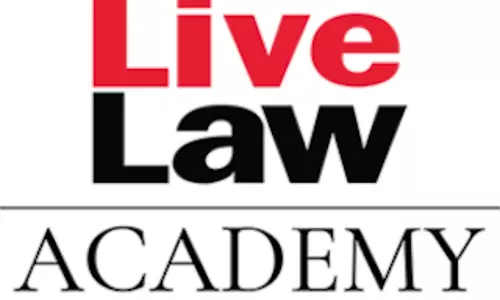The words speak for itself. It shows anguish and anxiety about the manner the case has moved through various stages and how defaulters with all means at their disposal to clear dues of the Banks have tried to take the system and the law for a ride. In spite of a very clear and strong judgment by the Supreme Court
, the case has proceeded at snail speed so much so that NCLAT had to intervene and set a deadline for order on resolution plan accepted by CoC.
The saga of Essar is well summarised by the following quotes from famous book of Jim Collins – How The Mighty Fall.
"When those in power begin to imperil the enterprise by taking outsize risks and acting in a way that denies the consequences of those risks, they are headed straight for Stage 4"
"When we find ourselves in trouble, when we find ourselves on the cusp of falling, our survival instinct and our fear can prompt lurching—reactive behaviour absolutely contrary to survival. The very moment when we need to take calm, deliberate action, we run the risk of doing the exact opposite and bringing about the very outcomes we most fear. By grasping about in fearful, frantic reaction, late Stage 4 companies accelerate their own demise.. "
Once among the top ten of Indian business empires, Essar finds itself listed in the dirty dozen list of defaulters and on the verge of losing control of its troubled entities. With ever-mounting debt of over Rs1.38 lakh crore, Essar was one of the most indebted corporate group.
[2] The Saga began with the classification of debt of Rs. 550 crores as NPA by HDFC Bank and thereafter its sale to Edelweiss Assets Reconstruction Company [EARC]. Bank of India too classified debt of Rs 500 crore as NPA. Federal Bank, ICICI Bank and Axis Bank sold their respective debt of Rs 70 crore, Rs 1,600 and Rs. 2000 crore to EARC.
Essar Steel earned the dubious distinction of becoming the first Indian company to default on its international debt repayment obligations. It failed to repay its floating rate notes worth (FRNs) $250 million issued to foreign investors. Till date, the group's scorecard reads three corporate debt restructurings (CDRs) in India and two bankruptcy protection filings in the US/Canada
[3]True to the theory propounded by Jim Collins
[4], instead of stabilising their business operations after CDR, the promoters of the group went on spree of expansion and acquisitions. They acquired Algoma Steel, mine in Minnesota, with huge commitment for investment and went on for expansion of Hazira plant. The 2015 report of House of Debt Revisited, Credit Suisse[5] noted that three years since first 'House of Debt' report, they found that despite attempts at deleveraging, financial stress at these groups (which included Essar among others) had intensified further. All the groups saw further rises in debt in FY15, which was up 7x over past eight years to ~12% of system loans. Their interest cover dropped to 0.8x vs 0.9x in FY14 and debt/EBITDA rose to 7x.
With the Government building up pressure on the Banks through Reserve Bank of India [RBI], Essar choose the path of conforntation and arrogance. The Company took RBI to Court for its direction
[6] to Banks to take the first twelve cases (also known as dirty dozen which included Essar Steel) to NCLT under Insolvency and Bankruptcy Code, 2016 (IBC/Code). This attitude of Essar promoters continued as they tried each and every trick in the books to stall CIRP process and to wrest control of the Company. The proceedings which started with NCLT, Ahmedabad admitting application filed by SBI and SCB on August 03, 2017, are still going on after several rounds of litigations, applications, challenges, appeals by various parties. The resolution plan submitted by Arcellor Mittal and accepted by CoC has not seen finality yet and as the things stand, is most likely to end up before the highest Court. The process, which under the Scheme of the Code, was to be completed within a maximum period of 270 days has now crossed more than 550 days and end is nowhere to be seen. At each stage every party, whatever may be its position under IBC, has tried to put the system to test.
NCLT Ahmedabad started well while admitting application of SBI and SCB and observing that technical barriers must not come in the way of speedy recovery under the Code, however, the momentum got lost in complexities of issues and cross litigations and matter going to Higher Courts on several occasions.
Analysing the status of pendency before NCLTs and economic cost thereof, Shri Amitabh Kant, CEO of NITI Ayog wrote that
recent estimates peg losses to bank income at about Rs 4,000 crore, primarily due to pendency in the resolution of the original 12 major insolvency cases RBI had referred last year. …… Only four cases referred in June 2017 have been resolved, while the rests have been before NCLT for almost twice the period prescribed as ceiling — in excess of 470 days. Also, about 30% of the more than 800 ongoing Corporate Insolvency Resolution Process cases have passed their time ceiling, with an additional 20% having crossed the six-month timeline. Nearly four times the number of cases are being resolved through liquidation rather than through the process by which a resolution plan has been approved.
The Supreme Court too has expressed its concern on importance of adhering to the time line under IBC. Justice R F Nariman
[8] observed that "
Actus curiae neminem gravabit - the act of the court shall prejudice no one - is a maxim firmly rooted in our jurisprudence. But the time taken by a Tribunal should not set at naught the time limits within which the CIRP must take place. Where a resolution plan is upheld by the Appellate Authority, either by way of allowing or dismissing an appeal before it, the period of time taken in litigation ought to be excluded. This is not to say that the NCLT and NCLAT will be tardy in decision making. [Emphasis supplied]
IBC was implemented in December 2016 in the background of bad loans in banking industries crossing 10 lakh crore mark. The twelve case referred to NCLT in the first list of RBI constituted about 25% of NPAs. The distinct feature of IBC which differentiated it from the earlier regime was its strict timeline and separation of functions between different authorities. This along with waterfall mechanism provided under section 53 of IBC was its unique feature. There being no change in substantive law as was in force earlier, be it right of creditors, priority of secured creditor or status of guarantors. This position was later on reiterated by various judgements of the Supreme Court and also NCLAT. While Bhushan Steel became the first case which got completed under IBC and resulted in almost 100% recovery to Bank, the system now appears to be cranking under pressure mounted by fierce fight to retain control by the promoters hit by Section 29A of IBC and also by other creditors/parties who are not getting their perceived expected dues in CIRP process because of their positioning. NCLTs in their anxiety to be seen as court of justice, are increasingly breaching the line of separation of function under IBC. This concern was very well-articulated by NCLAT
[9] while observing that
"With modesty I put my view that a golden rule of interpretation of such statute is to subscribe a 'creative interpretation'. However, hastened to add that a "Laxman Rekha" is to be drawn while interpreting the provisions of a Law so that the main Legislative intent be not disturbed. A purposeful interpretation, also termed as "purposive interpretation" is sometimes more helpful to redress the grievance, so therefore preferred from literal interpretation. With all humility it is to be added that a Court must have recourse to the purpose, object, text and context of a particular provision before arriving at a judicial result. My attempt herein below is also in this direction." [Emphasis supplied]
This breach of "Laxman Rekha" is resulting in more pressure on and confusion in the role of other authorities more specifically Committee of Creditors (CoC). Bankers, who initially were not very sure about functioning of the system, are now finding themselves in unique position of being pushed from all corners. On one hand, they have to face pressures of internal scrutiny which get triggered on an account becoming Non Performing (NPA) including scrutiny by internal teams and regulatory body and sometimes by outside investigating agencies, but also to maintain the strict timeline set up under IBC while guiding CIRP process and examining and evaluating the resolution plans and also to minimise losses to Banks while taking care of interest of all stakeholders. Expectations from CoC are too high but its discretion and authority is getting challenged and limited with each case.
While the Supreme Court has clearly laid down
[10] that NCLTs cannot interfere with the commercial wisdom of CoC, NCLTs are going into detailed scrutiny of resolution plans and approvals are held up for months. The procedure under IBC is slowly turning into civil litigation with lengthy pleadings and arguments by litigants and still lengthy orders by NCLTs. Admission of fresh application itself takes months putting timely revival to peril. Thus, the spirit of the Code and strict timeline set under IBC appears to be going for a toss. While focus of IBBI appears to be on setting code of conduct for RPs and CoC, the process followed by NCLTs and time consumed at each and every stage of proceedings has practically gone unnoticed.
"It is settled law that a statute is designed to be workable, and the interpretation thereof should be designed to make it so workable. Given the timeline and given the fact that RA has no vested right that his resolution plan be considered, it is clear that no challenge can be preferred to the AA at threshold. A writ petition under Article 226 filed before a High Court would also be turned down on the ground that no right, much less a fundamental right, is affected at this stage. Aggrieved RA can approach the NCLT for relief only after a resolution plan has been considered by the CoC via voting and not prior to that. [Justice R Fali Nariman in ArcelorMittal India Private Limited Vs. Satish Kumar Gupta & Ors.]
To be effective, NCLTs may need to curb tendency to admit and hear applications at every stage of CIRP process which leads to appeals/counter appeals. Why can't trivial applications be handled in more stricter manner and decided in a day to two. Further, (barring few cases involving large number of parties and complex issues) why should orders of NCLTs (be it admission/interim/or final) run into hundreds of pages. Lengthy pleadings would force Tribunals to devote more time and efforts in passing orders. Therefore, there is urgent need to curb unwarranted applications and hearings needs to be very limited, otherwise, Code is running the huge risk of losing its momentum. Lets build upon the epoch making observations of Justice R F Nariman in S
wiss Ribbons case
to the effect that:
"The Insolvency Code is a legislation which deals with economic matters and, in the larger sense, deals with the economy of the country as a whole. Earlier experiments, as we have seen, in terms of legislations having failed, 'trial' having led to repeated errors, ultimately led to the enactment of the Code. The experiment contained in the Code, judged by the generality of its provisions and not by so-called crudities and inequities that have been pointed out by the petitioners, passes constitutional muster." [Emphasis supplied]
This judgement gives enough authority to NCLTs to take command of the cases without getting bothered about the fancy arguments and civil law doctrines which travel beyond the scope and purpose of the Code. The Authorities needs to move with time and meet need of the hour.
Banking and Financial system need strict and meaningful implementation of Code so that the Country can have a reasonably disciplined financial system of borrowing, lending and repayment. Tribunals have greater responsibility to ensure that spirit of the Code [as captured in the statement
"we are of the considered view that the spirit of the Code is first and then comes the other things [12]. ] is not diluted while applying principles and practices of civil law. The concern expressed by Justice
S J Mukhopadhaya needs to be taken into account by all the stakeholders be it RPs, CoC, Tribunals and professionals who have greater responsibilities to see that this challenging phase of development of jurisprudence does not lose track. Development and progress of IBC and its unique timeline is being keenly observed by the world and it is duty of each and every authority associated with implementation of the Code to seize this opportunity and show to the world that "
we can".
[1]ArcelorMittal India Private Limited Vs. Satish Kumar Gupta & Ors. [Civil Appeal Nos. 9402-9405 of 2018]
[2] Nevin John in Business Today of July 02, 2017
[3] Nevin John in Business Today of July 02, 2017
[4] Book How the Mighty Fall by James
[5] https://plus.credit-suisse.com/rpc4/ravDocView?docid=V4pSWN1AF-WElY95
[6] https://rbi.org.in/scripts/BS_PressReleaseDisplay.aspx?prid=40743
[7] Shri Amitabh Kant -CEO NITI Ayog - The Economic Times- Jan 25, 2019
[8] ArcelorMittal India Private Limited Vs. Satish Kumar Gupta & Ors. [Civil Appeal Nos. 9402-9405 of 2018]
[9] Satyanarayan Malu in the matter of SBM Paper Mills Ltd. [M.A. 1396/2018, 827/2018, 1142/2018, & 828/ 2018 in C.P. (IB)- 1362(MB)/2017]
[10] Swiss Ribbons Private Limited & Anr. v. Union of India- WRIT PETITION (CIVIL) NO. 99 OF 2018
[11] Swiss Ribbons Private Limited & Anr. v. Union of India- WRIT PETITION (CIVIL) NO. 99 OF 2018
[12] ICICI Bank Limited Vs. Unimark Remedies Ltd. [MA No. 1529 of 2018 in CP No. 197/2018]



